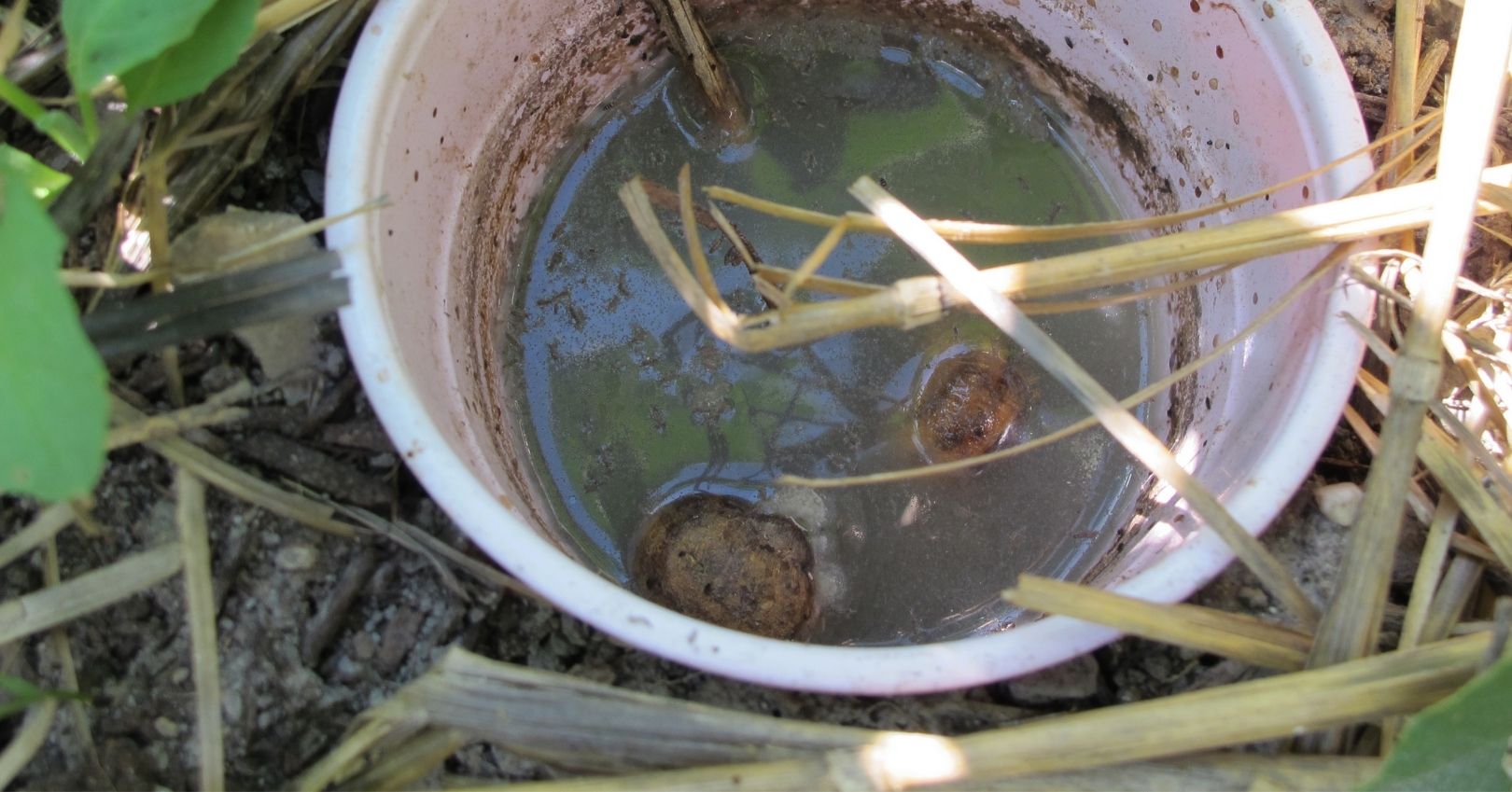Slugs and Snails




Description
Adult: Small soft-bodied mollusks. Slugs and snails are closely related except snails have a hard shell and slugs do not. Mucus or slime is secreted and left behind as they travel. As the mucus dries, it forms a shiny white silvery trail, indicating that the pests are present
Egg: Small, round, pearl-like, and translucent in color when they are young, turning white as they mature. Covered in a layer of mucus. Laid in groups of about 25-120 eggs under residue on the soil surface, if the soil is moist, or in sheltered cavities near the soil surface.
Life History
Slugs and snails are hermaphroditic. Each individual has both male and female sex organs and is capable of laying a total of 300 eggs. Eggs may hatch in about 1 month under favorable conditions. After hatching, the young start feeding and can reach sexual maturity in 3-5 months (some snails may take up to 2 years to reach maturity). Many slugs and snails that hatch in the spring can begin laying eggs in the fall. Younger slugs and snails tend to stay close to their hatching site and return there each morning. Slugs and snails need moisture to thrive but survive in reasonably dry conditions by hiding in protected areas.
Damage
Slugs and snails feed on a wide variety of plants and are particularly damaging to new seedlings and maturing vegetables that touch the soil. They feed on leaves with chewing mouthparts resulting in irregular holes with smooth edges. Look for the silvery mucous trails as other chewing pests (earwigs, caterpillars) may cause similar damage.
Management
Although salt will kill slugs and snails quickly, it is not recommended because it will damage plants.
Cultural
- Sanitation. Remove boards, stones, and any debris that shelters slugs and snails.
- Handpicking may not be practical for large commercial productions, but can be an effective method of controlling slugs and snails when done regularly. Daily removal is most effective but after initially reducing the population, handpicking once a week will keep the numbers down. Water the garden in the afternoon to encourage slugs and snails to come out after dark when you can pick them up and drop them in a bucket of soapy water or seal them in a plastic bag. Do not crush slugs and snails in the garden as any eggs remaining in their carcass will hatch even after the parent is dead.
- Barriers. Slugs and snails avoid irritating barriers. Barriers only work if slugs and snails have other desirable places to feed or hide. Mesh copper screens or sheeting 8 inches wide make effective barriers. Barriers are not lethal, but divert the pests to other nearby vegetation
- Traps can be used to lure and destroy slugs and snails. Types of traps include:
- One inch strips of lumber nailed as runners on the underside of a 12 x 12 inch board. Slugs and snails crawl underneath the board as a hiding place each day. Turn the trap over once a day and destroy the pests.
- Bait traps using a pie plate or deeper container (deeper is more effective as it prevents pests from escaping) filled with beer, yeast water, or plain water will attract and destroy slugs and snails. Remove and dispose of the pests each morning to maintain the appeal of the trap.
- Inverted melon rinds and other produce scraps are also attractive to slugs and snails.
Biological
Natural enemies of slugs and snails include geese, ducks, and other birds. These predators may damage young seedlings or cause problems with their droppings. Some ground beetles, rove beetles, and certain flies are natural enemies of snails, as are toads and snakes.
The predacious decollate snail is a voracious predator of the common garden snail but is not recommended for garden situations because it may feed on seedlings, small plants, and flowers once other snails are controlled.
Chemical
Slug and snail baits can be used in severe cases and can be effective when combined with the cultural control methods listed above. Baits composed of iron phosphate are nontoxic to nontarget animals. Use bait stations to keep bait dry and avoid attracting pets, birds, or other nontarget animals. Effective bait stations include:
- Small piles of bait covered with a board trap (described above under traps). The covered area remains somewhat moist, so slugs and snails tend to congregate there.
- Milk cartons (containing bait) with small “doorways” cut in the side. The bait is accessible but is protected from rain or irrigation and does not touch the soil.
- Similar bait stations can be made from other food containers such as cottage cheese cartons. Cut slots around the sides big enough for slugs and snails to enter and bury the trap so the slots are level with the soil. Place the bait inside the containers and put the lid on. Remove and renew the bait when pests are killed.
Commercial baits are more attractive to slugs and snails when they are slightly moistened with apple or orange juice. If they become too wet, they are ineffective.
Diatomaceous earth can protect vulnerable plants from slugs and snails. Sprinkle diatomaceous earth on plant leaves and on the surrounding ground. Diatomaceous earth becomes ineffective when wet, so reapply as needed.

